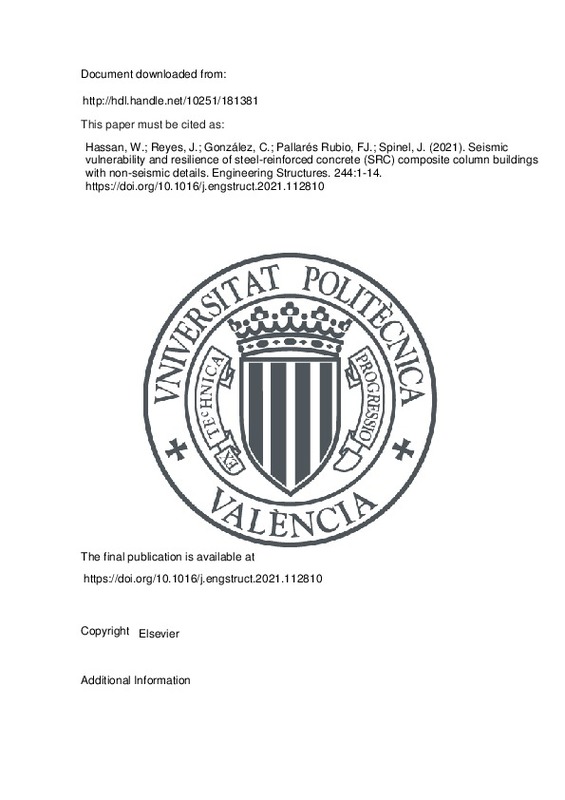JavaScript is disabled for your browser. Some features of this site may not work without it.
Buscar en RiuNet
Listar
Mi cuenta
Estadísticas
Ayuda RiuNet
Admin. UPV
Seismic vulnerability and resilience of steel-reinforced concrete (SRC) composite column buildings with non-seismic details
Mostrar el registro completo del ítem
Hassan, W.; Reyes, J.; González, C.; Pallarés Rubio, FJ.; Spinel, J. (2021). Seismic vulnerability and resilience of steel-reinforced concrete (SRC) composite column buildings with non-seismic details. Engineering Structures. 244:1-14. https://doi.org/10.1016/j.engstruct.2021.112810
Por favor, use este identificador para citar o enlazar este ítem: http://hdl.handle.net/10251/181381
Ficheros en el ítem
Metadatos del ítem
| Título: | Seismic vulnerability and resilience of steel-reinforced concrete (SRC) composite column buildings with non-seismic details | |
| Autor: | Hassan, W.M. Reyes, J.C. González, C. Spinel, J.S. | |
| Fecha difusión: |
|
|
| Resumen: |
[EN] Prior to the enforcement of seismic details, older-type fully encased steel-reinforced concrete composite (SCR) columns were utilized in many buildings and bridges constructed in active seismic regions worldwide. ...[+]
|
|
| Palabras clave: |
|
|
| Derechos de uso: | Reconocimiento - No comercial - Sin obra derivada (by-nc-nd) | |
| Fuente: |
|
|
| DOI: |
|
|
| Editorial: |
|
|
| Versión del editor: | https://doi.org/10.1016/j.engstruct.2021.112810 | |
| Tipo: |
|







![[Cerrado]](/themes/UPV/images/candado.png)


